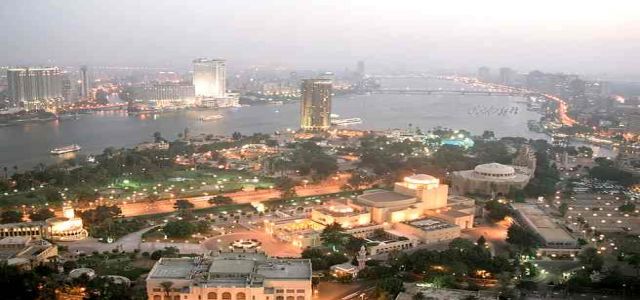Competing Visions and Priorities: Alternatives to Cairo 2050

The Egyptian people have long lived in the hope of achieving the minimum of a decent livelihood, self-reliance, adequate housing and food sovereignty. However, for decades now, a series of official attempts have dealt with the symptoms of impoverishment for the majority of the Egyptian people under in the terminology of “sustainable development.” However, a structural authoritarian technical and governance approach pursuing “globalized” priorities and interests has succeeded only to produce a methodology of deprivation that has become socially polarizing. What prevails is a marked distinction between development that is considered government led and, hence, progressive, on the one hand, and what is impoverished, popular, alternative and informal, on the other.
The model epitomizing this approach is the development plan of Greater Cairo called Plan 2050. For the needy residents of the capital, this planning process is opaque, and even its name is fraught with ambiguity and disappointment. The residents of Cairo’s slums seek immediate solutions to their main problems related to housing. Where participation is not built into its first steps, official planning coincides with an official culture that blames the poor for interfering with decision makers’ grandiose preferences. Transforming bustling neighborhoods into steel and glass tower clusters and tourist-friendly vistas of the pyramids threatens the forced eviction of untold thousands of the most-vulnerable Cairenes.
For the majority of Cairo inhabitants, Cairo 2050 is more of the same old same old. Urban planning has yet to undergo its revolution.
The result on the ground, even after the so-called 25 January Revolution, is increased poverty and a continuing lack of accountability for the legacy of violations of a bundle of rights through forced evictions and neglect. Not only do local authorities dismiss popular, self-built communities, but central government practice also has drastically undercounted their number, so as not to acknowledge a population threshold that legally requires the extension of public services and representative political structures.
Some of the most active and creative HLRN partner organizations are relatively new and inspired by the objectives of the 25 January uprising. Such actors as the Egyptian Association for Collective Rights, the Egyptian Center for Civic and Legislative Reform and the Ruzza Society for Development are sharing their inspiration, technical assistance and capacity building so that local communities can come up with their own visions and physical plans. A more self-determined approach is spreading to marginalized neighborhoods across Cairo such as Maspero Triangle, Batan al-Baqara, Imbāba and Duwaiqa, as well as to the planned low-grade settlement for the displaced at Pyramid City, southwest of Cairo. Even rural villages, like Abū Ghālib (North Giza), subjected to alien development plans that are undermining their livelihoods are putting their own objectives on the map, as it were. Local communities are articulating their alternatives to urban planning in its official form, which has exhausted all hope delivering social development.
In this context, the Housing and Land Rights Network partners in Egypt have combined research, capacity-building and networking efforts since 2009 to channel alternative visions that emanate from the inhabitants themselves. This urban re-envisioning process, exemplified in its workshop “Urban Development and People`s Rights to Adequate Housing.” Member organizations in the Network are seeking creative ways to work together and complement each other to provide effective alternatives to the authoritarian grand designs, in particular Cairo 2050, which is being hatched at the official level in the unaltered authoritarian way: protecting vested private interests, without effective popular consultation. However, in light of Egypt’s 25 January 2011 turning point, consultations within and among communities and their HLRN supporters are engaged in alternative planning and social production of habitat in new and productive ways, despite the remote promises and persistent threats of Cairo 2050.
|